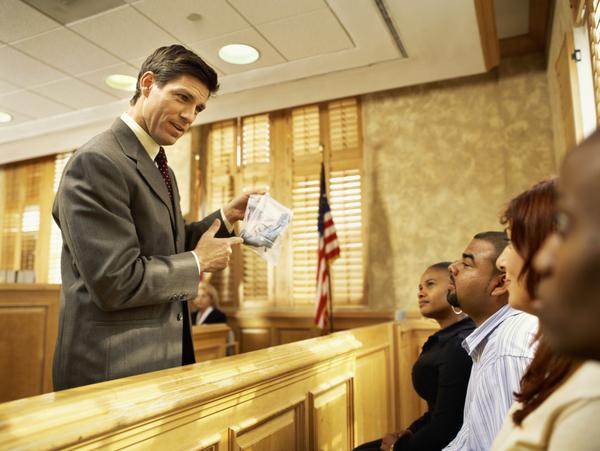Streamline legal arguments with interactive and structured trial presentations that engage jurors.
Streamline legal arguments with interactive and structured trial presentations that engage jurors.
Blog Article
Just How Trial Presentations Enhance Your Disagreement and Persuade Jurors
Trial discussions act as a crucial device for improving legal arguments and persuading jurors. By incorporating aesthetic aids, narrative structures, and psychological involvement, attorneys can create an engaging instance that reverberates on multiple levels. The critical usage of visuals not only clarifies intricate info but also records jurors' focus better than words alone. However, the art of narration plays a similarly crucial duty in changing factual proof into an engaging narrative, forming jurors' understandings - trial presentations. Comprehending these aspects can significantly impact trial end results, raising the question of just how each element adds to this complex dynamic.

Relevance of Aesthetic Aids
Aesthetic aids play a crucial duty in enhancing the performance of trial discussions, as they can substantially enhance target market interaction and retention of details. In the context of a trial, where jurors are entrusted with processing facility info, aesthetic aids offer to simplify and clear up key factors. Charts, graphs, and photos can communicate information and concepts that may otherwise bewilder or confuse jurors, enabling a more simple understanding of the proof presented.
In addition, visual aids assist in keeping juror attention throughout the procedures. By damaging the monotony of spoken testament, these tools can punctuate essential disagreements, making them extra memorable. Efficient aesthetic help can also stimulate emotional actions, which can be crucial in persuading jurors to line up with the speaker's story.

Crafting Compelling Narratives
An engaging story is necessary in trial discussions, as it functions as the foundation of efficient persuasion. It allows attorneys to weave with each other realities, proof, and emotional aspects right into a systematic tale that resonates with jurors. This narrative structure enables jurors to comprehend the intricacies of the instance while guiding them through the attorney's disagreement.
To craft an engaging story, attorneys ought to focus on clarity and comprehensibility. In addition, the usage of brilliant descriptions can create mental images that aid jurors envision the occasions, making the narrative much more memorable.
Moreover, incorporating crucial styles throughout the presentation reinforces the core message and help in retention - trial presentations. The story ought to not only share info however also stimulate a sense of justice, highlighting the stakes entailed. Eventually, a well-constructed narrative cultivates a link between the jurors and the case, placing the attorney's argument as both trustworthy and engaging, thus increasing the chance of a positive verdict

Involving the Jury Mentally
Effective jury interaction pivots on the lawyer's ability to link with jurors on a psychological degree. This link can dramatically influence jurors' perceptions and their supreme decision-making.
Aesthetic help, such as pictures or video clips, can even more boost psychological interaction, giving jurors with brilliant representations of the situation's human elements. Crafting a story that highlights the battles and accomplishments of the individuals entailed makes sure that jurors see beyond the legal arguments and acknowledge the human repercussions of their choices.
A lawyer's passionate delivery can reverberate with jurors, enhancing their emotional investment in the instance. Discover More Here It's crucial to stabilize emotional appeals with valid evidence, ensuring that jurors really feel forced to act while staying grounded in the fact.
Structuring Your Presentation

The body of the discussion ought to be logically fractional right into bottom lines, each sustained by engaging evidence. It is beneficial to utilize storytelling methods to weave have a peek at this site facts into a story that jurors can easily adhere to. Visual help, such as graphes and videos, can boost comprehension and interaction, helping to highlight important pieces of evidence.
Real-World Instance Studies
Checking out real-world case i thought about this research studies gives indispensable understandings into the art of trial discussions and persuasion. As an example, the site instance of "O.J. Simpson v. The People of The golden state" illustrates how visual help and engaging stories can sway jury understandings. The protection group efficiently utilized a method that incorporated high-profile expert statements with multimedia discussions, which astounded jurors and inevitably influenced their decision.
Another notable example is the "McDonald's Coffee Case," where the plaintiff's attorneys utilized visuals photos of the injuries received by Stella Liebeck. trial presentations. This stark visual proof played a crucial role in sharing the severity of her burns, leading to a significant jury award. Such instances show that impactful test discussions usually pivot on the efficient combination of visuals and storytelling to evoke emotional feedbacks from jurors
In addition, the "Casey Anthony Test" highlighted the value of narrative coherence and trustworthiness. The prosecution's failure to develop an engaging timeline reduced their convincing power, underscoring the necessity of a well-structured discussion. Evaluating these situations exposes that effective trial presentations require critical preparation, emotional interaction, and the capacity to reverberate with jurors' worths and ideas.
Final Thought
Trial presentations considerably enhance disagreements and encourage jurors through the calculated usage of visual aids, engaging stories, and emotional interaction. By simplifying complicated information and fostering links with the target market, these components develop a remarkable and impactful experience. A well-structured discussion balances sob stories with factual evidence, inevitably resonating with jurors' values. The combination of these techniques not just influences decision-making but additionally highlights the importance of efficient interaction in the courtroom.
Report this page